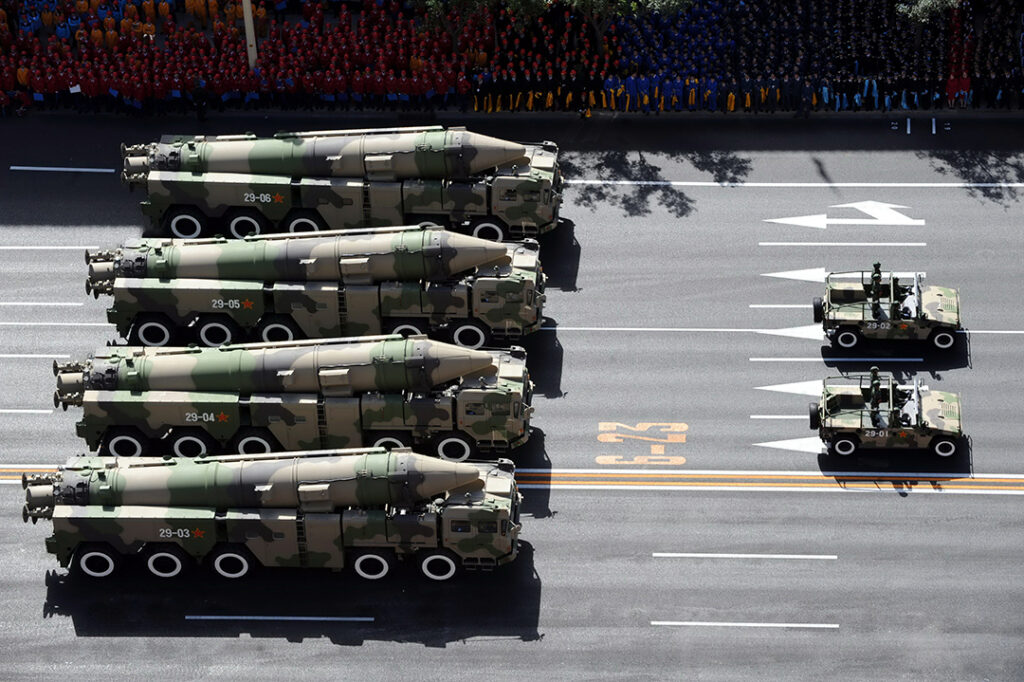REUTERS
The Pentagon sharply increased its estimate of China’s projected nuclear arsenal, saying that Beijing could have 700 warheads by 2027 and possibly 1,000 by 2030.
While the numbers would still be significantly smaller than the current United States nuclear stockpile, they represent a significant change from 2020, when the Pentagon warned the Chinese arsenal would top 400 by the end of the decade.
Washington has repeatedly called on China to join it and Russia in a new arms-control treaty.
In its annual report to Congress on China’s military, the Pentagon on November 3, 2021, reiterated concern about increasing pressure on self-ruled Taiwan, an island China considers a breakaway province, and China’s chemical and biological programs and technological advancements.
But the report put particular emphasis on China’s growing nuclear weapons arsenal.
“Over the next decade, the PRC aims to modernize, diversify and expand its nuclear forces,” the report said, referring to the People’s Republic of China.
(Pictured: Chinese medium-range ballistic missiles during a military parade in Beijing in 2009.)
It said that China had started building at least three intercontinental ballistic missile (ICBM) silo fields.
“Whether China follows through with these estimates from the United States will depend in great part on the policies and actions of the United States,” said Daryl Kimball, the executive director of the Arms Control Association.
“The potential for China to increase its arsenal to these levels underscores the urgent necessity of pragmatic bilateral or multilateral talks to reduce nuclear risks,” Kimball said.
Beijing says its arsenal is dwarfed by those of the U.S. and Russia, and that it is ready for dialogue, but only if Washington reduces its nuclear stockpile to China’s level.
The U.S. has a stockpile of 3,750 nuclear warheads, of which 1,389 were deployed as of Sept. 1.
At a news briefing in Beijing on November 4, Chinese foreign ministry spokesperson Wang Wenbin called the report “full of prejudice.”
The Pentagon report renewed concerns about China’s increasingly muscular military and its development of options to take Taiwan, one of several scenarios the U.S. military cautioned Beijing could pursue.
Separately, the top U.S. general said that China was unlikely to try to militarily seize Taiwan in the next couple of years.
“Based on my analysis of China, I don’t think that it is likely in the near future — being defined as, you know, six, 12, maybe 24 months, that kind of window,” said Army Gen. Mark Milley, chairman of the Joint Chiefs of Staff.
The Pentagon report added a section on China’s biological weapons and potential dual use but did not look at the origins of COVID-19.
There has been increased focus on China’s chemical and biological capabilities after COVID-19 was first identified in the central Chinese city of Wuhan in late 2019.
U.S. intelligence agencies said last week that they may never be able to identify the origins of the pandemic, as they released a detailed version of their review of whether the coronavirus came from animal-to-human transmission or leaked from a lab.
China has consistently denied allegations that the virus was leaked from a specialist laboratory in Wuhan.

